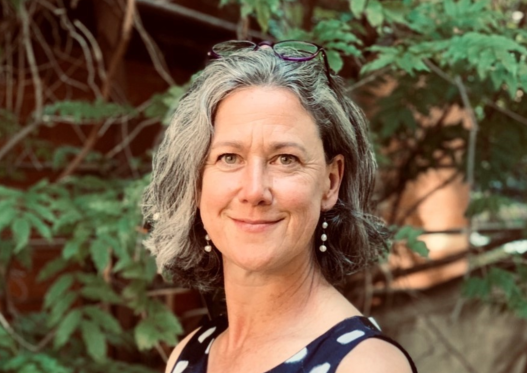Australian financial services organisations are in danger of being behind the curve on climate capabilities compared to other leading regions, according to the author of FINSIA’s new Certificate in Climate Risk.
Paul Dobbs, who is the lead author of the climate risk certification syllabus for FINSIA’s partner organisation Chartered Banker Institute, spoke to InFinance on the eve of COP26 to provide a personal overview of what is being described as a bigger threat to the world than the current pandemic.
The recent COVID-19 pandemic has created a real-life scenario of the devastation that could happen if climate change continues unattended, he says.
COVID-19 will impact the global economy for years; climate change will impact the global economy (and the whole of society) for decades, if not centuries. There are large time lags before climate change damage becomes apparent and irreversible: the most damaging effects will be felt far beyond the traditional short-term time horizons of policymakers and other economic and financial decision-makers.
“From my initial observations, the Australian financial services industry needs to play catch up with leading regions such as UK and Europe in order to make sure no region is left behind. Climate change requires a global and consistent approach,” he said.
“To address some of the challenges around capturing climate risks and opportunities, the industry is going to have to allocate more time and resources. This will include a heavy reliance on consultants, independent research organisations and vendors to help financial institutions progress this forward in a meaningful way.”
For the risk specialist who has worked around the globe during a 20-year FS career, growing up on a farm also helped to instil an understanding of the way the natural world is intertwined with the economy from a physical risk perspective.
“While climate changes and weather events are nothing new, it’s the fact that these are now becoming more frequent and ferocious,” he added.
“Unfortunately, it hasn’t been until recently that the risks (both financial and non-financial) have started to be better managed and mitigated.
“Although physical risk events will have a detrimental effect and impact on revenues, we need to be mindful that the transitional risks are just as great” he said. The levels of these risks will greatly depend on the region, industry and sector (for physical risks), not to mention government and private commitments (for transitional risks).
Paul says it was not really until the recent tragic events over the last couple of years such as the Californian and Australian bushfires, European floods etc that many started to demand more change.
Back in 2016, even in the wake of the Paris Agreement, he says there was a sense that climate change was an ‘afterthought by many organisations’.
“There was never any significant reputational damage unless it was a massive oil spill or environmental disaster,” he says, adding that even then the ‘markets quickly moved on’.
The bushfires across the US and Australia, hurricanes in the Caribbean and deadly floods in Asia and Europe became a wake up call for many.
In a 12-page, climate risk introduction he wrote recently, Paul highlighted how a group of the world’s largest companies – representing nearly US$17 trillion in market capitalisation – valued the climate risks to their businesses at almost $1 trillion. Many thought those risks were likely to materialise within the next five years, according to the 2018 CDP Global Climate Change Report.
“More than three-quarters see major climate impacts, including extreme weather patterns, rising global temperatures and increased pricing of greenhouse gas emissions,” said Paul.
“Around $500 billion of costs are rated as “likely” to “virtually certain”, with higher operating costs linked to legal and policy changes making up a significant risk.”
But the author is keen - as many others are - to point out that while there are ‘significant financial challenges’ there are also ‘opportunities, both now and in the future’ which all economies should also be focused on
Drawing on former Bank of England governor Mark Carney’s comments around firms aligned to net zero will be rewarded handsomely and noting a recent Goldman Sachs Carbonomics Report that estimates clean tech has the potential to drive US$1-2 trillion pa of green infrastructure investments and create 15-20 million jobs worldwide, through public-private collaboration. he says: “New opportunities are continually being created. Every risk has an opportunity.
“To my mind, banks and financial institutions (given their instrumental role in financing, risk management and investment) have an obligation to help educate and guide their clients and customers about the risks and opportunities of climate change. The positive here is, we are already seeing many financial institutions doing this.
Although the UK and Europe are further ahead in their climate journey, Australia is catching up very quickly given the rhetoric from the RBA, APRA, ASIC and the ABA. This is vital, because if Australia isn’t seen to be transitioning to a more sustainable economy going forward, inward investment may potentially slow ultimately impacting markets and the cost of funding.
“The good thing is the Australian FS industry is getting the message out there about the need to move towards net zero. But it’s also about making sure that the transition doesn’t cause huge disruption You don’t want a big bang.”
Asked about who the certificate is aimed at, Paul says everyone from C-Level executives, to finance and risk professionals all the way through to students
“Education and training is paramount, whether you’re starting out or in a senior risk role,” he says.
“Even at the highest level, including at board level, there’s a lot of education needed.”









